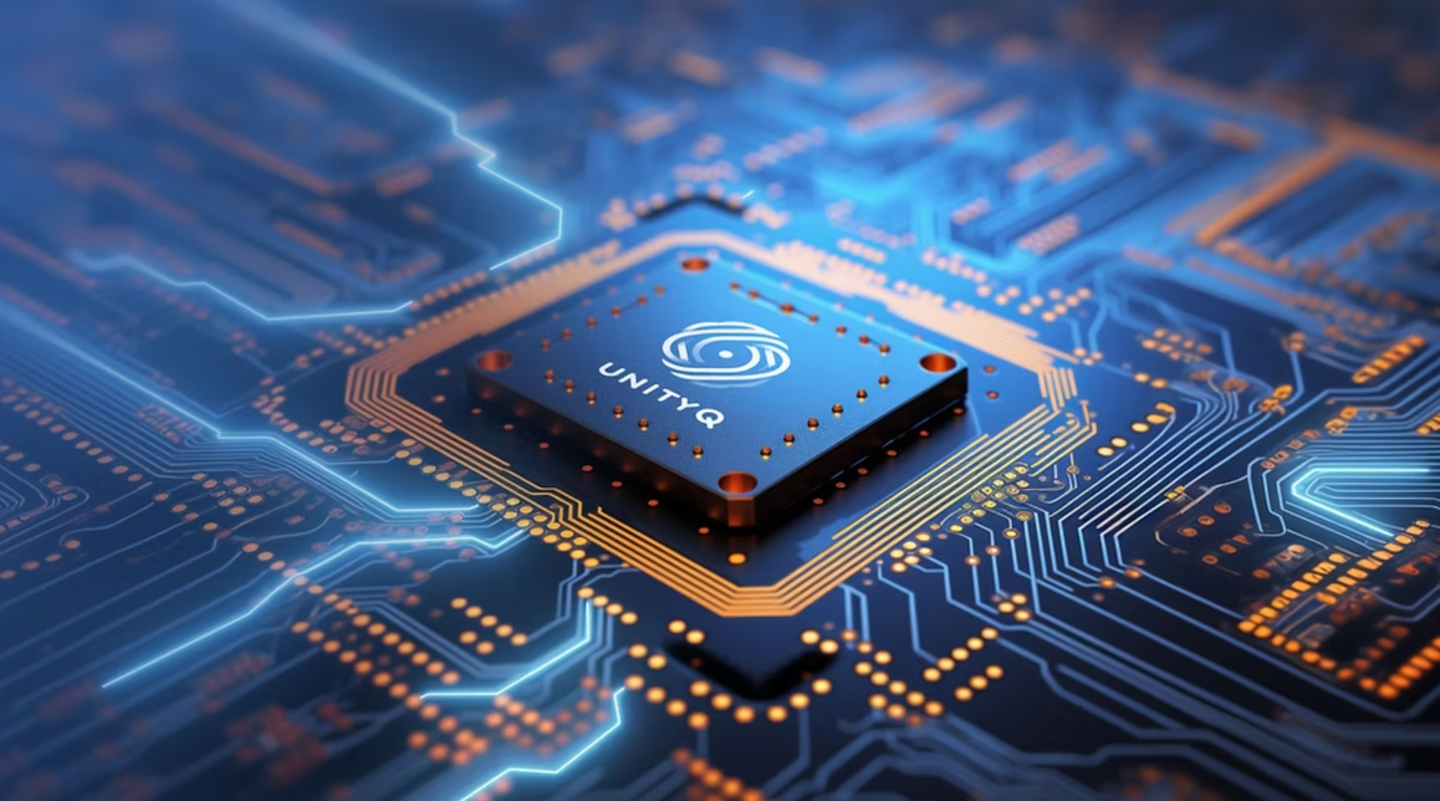First-ever silicon-based quantum computer brings scalable quantum power to the masses
Equal1 has just revealed a major step forward in quantum computing. The company’s new machine, Bell-1, is changing the way people think about quantum technology. Rather than needing a special…

Equal1’s Bell-1 quantum server plugs into regular data centers, bringing scalable quantum power without exotic setups or extreme costs. (CREDIT: Equal1)
Equal1 has just revealed a major step forward in quantum computing. The company’s new machine, Bell-1, is changing the way people think about quantum technology.
Rather than needing a special lab, Bell-1 fits into a standard high-performance computing (HPC) environment. It’s about the size of a graphics card server and weighs just over 440 pounds. You can slide it into a rack, plug it into a wall outlet, and start using quantum computing—no specialized cooling systems, no extra infrastructure, and no barriers to entry.
From the Lab to the Real World
For years, quantum computers have lived in research labs, surrounded by bulky equipment and cooled with complex systems. Bell-1 breaks away from that. Built to run inside typical data centers, it offers real-world quantum power without demanding anything out of the ordinary. It works like any other server—draws only 1600 watts of power and runs alongside traditional CPUs and GPUs.
This shift is part of what Equal1 calls “Quantum Computing 2.0.” The company has built a commercially viable quantum system using silicon-based technology, and it integrates directly into existing HPC setups. You don’t need to redesign your data center or invest in exotic materials. Bell-1 makes quantum computing practical for businesses in industries like finance, artificial intelligence, drug development, and materials science.
CEO Jason Lynch explained it this way: “Bell-1 represents a paradigm shift in how quantum computing is deployed and utilized. We’ve taken quantum technology out of the lab and into real-world environments where it can drive innovation. This is the dawn of Quantum Computing 2.0—where accessibility, scalability, and practicality take center stage.”
A System Ready to Work
What powers Bell-1 is Equal1’s UnityQ 6-Qubit Quantum Processing System. This chip is based on silicon spin qubits, which are smaller than the superconducting or trapped-ion qubits used in other systems. Because they’re made with standard semiconductor fabrication tools, they offer a clear path to scaling up.
Related Stories
The UnityQ chip includes more than just qubits. It packs in classical processors (Arm CPUs), neural processing units (NPUs), and quantum control electronics—all on the same chip. This design removes the usual back-and-forth between quantum and classical parts. Everything works in sync, making the system faster and more efficient.
Another standout feature is its closed-cycle cryo-cooling system. Bell-1 cools itself to 0.3 Kelvin, just above absolute zero, using built-in refrigeration. That’s about –459.13 degrees Fahrenheit, colder than outer space. Yet it does this without the bulky dilution refrigerators that other systems need. You don’t need liquid helium or advanced piping. Just a standard plug.
Bell-1 handles its own error correction, control, and readout right on the chip. This reduces latency, increases reliability, and supports longer coherence times, which are crucial for quantum operations. The company’s system even leverages AI-powered error correction algorithms, developed with help from Arm, to further boost stability.
Simple to Use, Powerful in Practice
One of the most striking things about Bell-1 is how easy it is to deploy. Its physical footprint is standard for data centers: 600 mm by 1000 mm by 1600 mm. Weighing about 200 kg, it’s light enough for most standard server racks. And it only consumes as much power as a high-end enterprise server.
That simplicity hides a very powerful core. Bell-1 can take on intense workloads in areas where traditional computers struggle. Complex simulations, advanced pattern recognition, and chemical modeling can all be handled more efficiently with quantum acceleration. The system opens new doors for AI training, financial forecasts, and even climate science.
And Equal1 isn’t stopping here. The company plans to expand its UnityQ platform to include more qubits in future models. Thanks to the modular design of Bell-1, upgrades will be as easy as swapping in a new chip. Businesses won’t have to throw out their machines; they can just enhance them. That future-ready approach makes this a long-term investment, not just a shiny new toy.
Built for What’s Next
Equal1’s announcement follows research the company published in arXiv in late 2024. That work set new records in the performance of silicon qubit arrays and quantum control chips. Their data showed the highest known single- and two-qubit gate fidelity—meaning fewer calculation errors—and faster gate speeds, which shorten the time needed to run quantum tasks.
Bell-1 builds directly on that foundation. It’s not just a test bench or concept—it’s a production-ready, scalable system with working applications. And it's the first time a quantum machine has been built specifically to serve inside the same space where AI and HPC workloads already live.
Lynch summed it up well: “By eliminating the barriers of cost, infrastructure, and complexity, Equal1 is empowering businesses to harness the exponential power of quantum computing today—not in some distant future. Bell-1 is not just an advancement—it’s a revolution in computing.”
That revolution means real-time quantum computing, accessible to any company with a data center and a vision. You don’t need to wait. The future of computing now fits on a rack.
A Quantum Shift in Industry Standards
Bell-1 stands out because it removes the traditional tradeoffs between quantum power and practical use. It does not need labs, exotic components, or million-dollar cooling systems. Instead, it offers clean integration with hardware you already understand. It’s practical and powerful at once.
This launch could mark a shift for industries long held back by the complexity of quantum tools. In the past, only top academic labs or big tech companies could experiment with quantum hardware. Now, smaller research institutions, startups, and regular businesses can plug into the same level of computational power.
By using widely available materials and manufacturing techniques, Bell-1 also helps the quantum field take a step toward global scale. Silicon-based quantum processors are much easier to mass-produce than superconducting ones, and they offer compatibility with the semiconductor industry’s existing supply chain.
And because the system allows for easy upgrades, early adopters won’t be left behind. As UnityQ chips grow in qubit count and performance, they can be swapped into the same rack-mountable frame. That means Bell-1 is not only a breakthrough—it’s a foundation for the future.
Note: The article above provided above by The Brighter Side of News.
Like these kind of feel good stories? Get The Brighter Side of News' newsletter.



